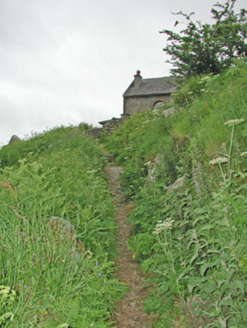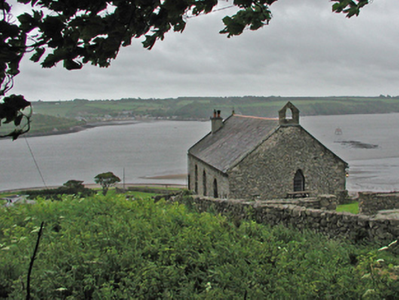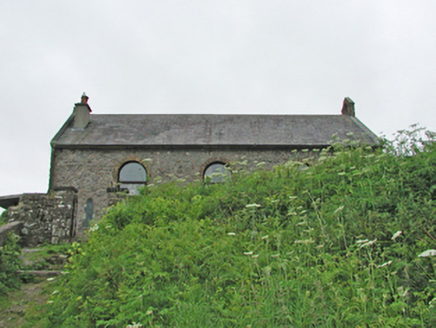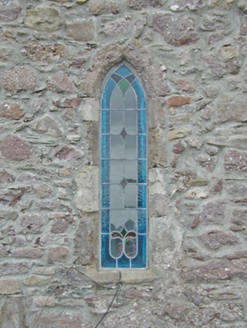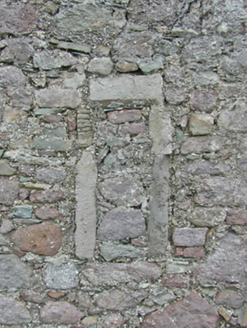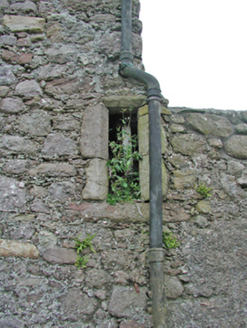Survey Data
Reg No
22807032
Rating
Regional
Categories of Special Interest
Archaeological, Architectural, Historical, Social
Original Use
Church/chapel
Date
1745 - 1750
Coordinates
270144, 110094
Date Recorded
05/06/2003
Date Updated
--/--/--
Description
Detached three-bay double-height single-cell Church of Ireland church, built 1746, on a rectangular plan. Repaired, 1835. Sold, 1978. Renovated, 1987, with interior remodelled to accommodate alternative use. Pitched slate roof with terracotta ridge tiles, coping to gables including coping to gable to entrance (west) front with gabled bellcote to apex, rooflights, and cast-iron rainwater goods retaining cast-iron downpipes. Part repointed rubble stone battered walls with rough hewn rubble stone quoins to corners. Round-headed window openings with cut-limestone sills, and repointed red brick voussoirs framing replacement fittings. Lancet window openings with repointed surrounds having chamfered reveals framing fixed-pane fittings having stained glass margins centred on square glazing bars. Round-headed window opening (east) with repointed red brick voussoirs framing replacement fitting. Interior remodelled, 1987, retaining coved or vaulted ceiling on carved timber cornice. Set in relandscaped grounds on an elevated site.
Appraisal
A church representing an integral component of the ecclesiastical heritage of County Waterford with the architectural value of the composition, one occupying the site of an oratory erected 'after 1284 by Matthew de Bruys of Coolmacsawry [and] depicted as a ruin in a 1685 drawing' [SMR WA018-009003-], suggested by such attributes as the compact rectilinear plan form, aligned along a liturgically-correct axis; the feint battered silhouette; and the simple bellcote embellishing the roof: meanwhile, estimate drawings signed (12th August 1835) by James Pain (c.1779-1877) illustrate the programme of repair completed with 'a grant from the Ecclesiastical Commissioners' (Lewis 1837 II, 155) while reused stone work may pinpoint the archaeological potential of a church making a dramatic visual statement overlooking Passage East and the broad River Suir as it flows into Waterford Harbour.
